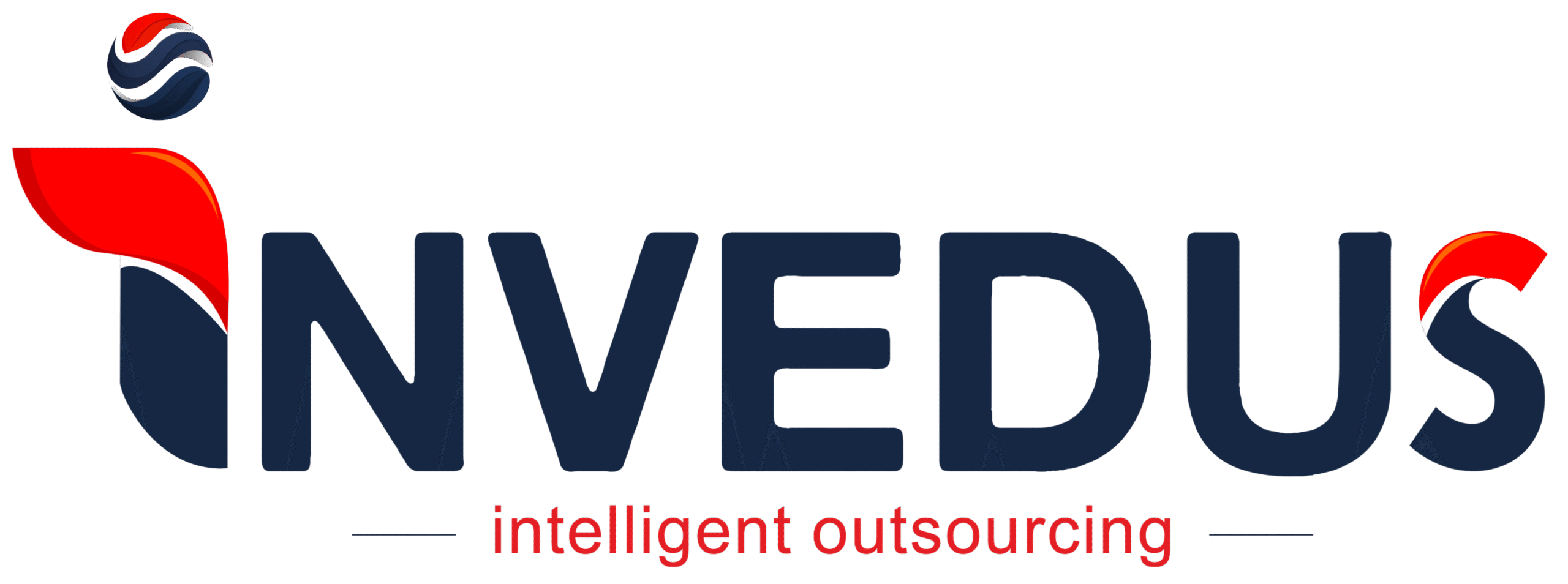
Nearshore vs Offshore Development Outsourcing in 2025
If you are a business owner who got frustrated with in-office hires, you may have dabbled in nearshore or offshore outsourcing. It is a sure-proof way of hiring specialized and experienced talent without the overhead or management costs.
However, you might’ve also stumbled upon the choice of which one is best for you. It is not just a “let me select the convenient option” but more into the lines of which one will make my business processes easier and cost-effective.
In this detailed guide, we will discuss about nearshore vs offshore development outsourcing. We will cover:
- What nearshore outsourcing is
- How offshore outsourcing is defined
- Nearshore vs offshore comparison
- Advantages and Disadvantages of Nearshore Outsourcing
- Benefits and Challenges of Offshore Outsourcing
- When nearshoring is better
- When offshoring is better
- Hybrid outsourcing, and if it’s possible
- FAQs
Let’s explore!
What is Nearshore Outsourcing?
As the term suggests, nearshore outsourcing means to “outsource” your work to companies that are near your location. You can outsource or contract your work, or get particular services in neighboring countries or regions that share a similar time zone. An interesting thing that is also considered is the similarity in culture, to ensure that communications and work translate well.
For example,
- US → Latin America (Mexico, Colombia, Costa Rica, Brazil, Argentina)
- Canada → Latin America (Mexico, Chile, Costa Rica)
- UK → Eastern Europe (Poland, Romania, Ukraine, Bulgaria)
- Singapore → India, Malaysia & Philippines
Nearshoring is also used for very specific projects. Especially, software development is the number 1 service for nearshore outsourcing. However, marketing, customer service, and production/manufacturing services are also popular for outsourcing nearshore.
What Is Offshore Outsourcing?
Offshore development outsourcing is the complete opposite of nearshore outsourcing. It is the method of contractual work, services, or entire business processes for countries that are geographically far from the main country. Not only that, but offshore outsourcing countries are approximately 70% more cost-effective compared to nearshore models. The most common offshore countries include India, the Philippines, Vietnam, and other Asian countries.
Offshore outsourcing involves the following service contracts:
- Information technology services, like software development, application support, and other tech services.
- BPO services outsourcing, like customer support, accounting, payroll, back-office tasks, etc.
- Knowledge process outsourcing (KPO) tasks, like analytics, research, legal processes, and other highly specialized work.
Nearshore vs Offshore Outsourcing Models: A Side-by-Side Comparison

Comparing two of the most common outsourcing models is not an easy task. That’s why we have selected some criteria in which we will evaluate which model works best with, and then provide you with a clear answer on which model will suit your business. This will also help you know how productive offshore development teams can be or vice versa in certain situations.
Collaboration & Real-Time Communication
Starting with the similarities, both models force you to work with another country and an external resource. However, collaboration with nearshore companies is much easier compared to offshore options.
Nearshore assistants work in at least 6 hours in overlapping schedules, making it easier to schedule meetings, conduct real-time calls, and even ask for daily reports. In offshore models, outsourcing to a far country means sacrificing time zones. There may be overlapping hours, but less than nearshore models, about only 4 hours, but sometimes it can be 7 hours as well.
Hence, nearshore > offshore in this case.
Cost Efficiency & Budget Predictability
Now comes offshore outsourcing in the spotlight. Cost-wise, offshore models are 100% of the time cheaper than nearshore options. Moreover, costs are low because of the cheap labor that’s found in the country.
Especially India, is known for delivering quality development services at sometimes a quarter of the price of nearshore or onshore (outsourcing somewhere in the same country, such as the client’s) models. For convenience, we have mentioned the costs of outsourcing from offshore vs nearshore models for development.
| Service To Outsource | Nearshore Rates (LATam Countries | USD/hr) | Offshore Rates (India and Other Asian Countries | USD/hr) | Estimated Monthly Savings (in USD) |
|---|---|---|---|
| Web & Mobile App Development | $40 to $80 | $20 to $45 | $3,200 to $5,600 |
| Backend/API Development | $45 – $85 | $25 – $50 | $3,200 to $5,600 |
| Frontend/UI Development | $35 to $70 | $20 to $40 | $2,400 to $4,800 |
| Cloud/DevOps Services | $50 to 90 | $30 to $60 | $3,200 to $4,800 |
| QA & Testing (Manual + Automated) | $30 to $65 | $15 to $45 | $2,400 to $3,200 |
| Product Design & Prototyping (UX/UI) | $40 – $75 | $20 – $45 | $3,200 to $4,800 |
| Emerging Tech (AI/ML, Blockchain, IoT) | $55 – $100 | $30 – $70 | $4,000 to $4,800 |
| Maintenance & Support | $30 – $60 | $15 – $40 | $2,400 to $3,200 |
Comparing facts, it becomes clear that nearshore < offshore models in this scenario.
Talent Availability & Specialization
In nearshore models for outsourcing, you can find talent that is specialized. But there is usually a very selective pool of talent available. Also, this talent will cost you more than average, as the specialized individuals are hard to find in nearshore models.
Now, compared to offshore models, where you are browsing through a global talent pool, you will find specialized talent as well as hyper-niche individuals at reasonable rates and charges. This makes sure that you pay what you want to get. Also, there are some talent options you may not even get in nearshore companies. Here is a table that shows you the availability of niche talent in global offshore markets:
| Role | Outsourcing Model | Average Hourly Rates (USD) | Notes |
|---|---|---|---|
| AI/ML Engineer | Offshore (e.g., India, Vietnam) | $50 to $150 | High demand due to rapid AI adoption; premium rates reflect specialized expertise |
| Blockchain Developer | Offshore (e.g., Ukraine, Nigeria) | $60 to $120 | Expertise in decentralized technologies driving higher rates |
| Cybersecurity Specialist | Nearshore (e.g., Mexico, Brazil) | $55 to $100 | Critical for data protection; nearshore proximity enhances collaboration |
| DevOps Engineer | Offshore (e.g., India, Philippines) | $40 to $80 | Essential for CI/CD pipelines; rates vary by experience and region |
| Cloud Architect | Nearshore (e.g., Argentina, Poland) | $60 to $110 | Expertise in cloud solutions; nearshore locations offer time zone advantages |
| IoT Developer | Offshore (e.g., Vietnam, Nigeria) | $45 to $90 | Specialized in connected devices; rates influenced by project complexity |
| AR/VR Developer | Offshore (e.g., India, Ukraine) | $50 to $100 | Niche field with growing applications in gaming and training |
| Low-Code/No-Code Developer | Nearshore (e.g., Colombia, Mexico) | $40 to $75 | Rising trend for rapid application development |
| Full-Stack Developer | Offshore (e.g., India, Vietnam) | $30 to $70 | Versatile skill set; rates depend on technology stack and experience |
| Data Scientist | Offshore (e.g., Philippines, Nigeria) | $50 to $100 | Expertise in data analysis and modeling; rates vary by experience |
Comparing facts, it becomes clear that nearshore < offshore models in this scenario.
Talent Availability & Specialization
In nearshore models for outsourcing, you can find talent that is specialized. But there is usually a very selective pool of talent available. Also, this talent will cost you more than average, as the specialized individuals are hard to find in nearshore models.
Now, compared to offshore models, where you are browsing through a global talent pool, you will find specialized talent as well as hyper-niche individuals at reasonable rates and charges. This makes sure that you pay what you want to get. Also, there are some talent options you may not even get in nearshore companies. Here is a table that shows you the availability of niche talent in global offshore markets:
| Role | Outsourcing Model | Average Hourly Rates (USD) | Notes |
| AI/ML Engineer | Offshore (e.g., India, Vietnam) | $50 to $150 | High demand due to rapid AI adoption; premium rates reflect specialized expertise |
| Blockchain Developer | Offshore (e.g., Ukraine, Nigeria) | $60 to $120 | Expertise in decentralized technologies driving higher rates |
| Cybersecurity Specialist | Nearshore (e.g., Mexico, Brazil) | $55 to $100 | Critical for data protection; nearshore proximity enhances collaboration |
| DevOps Engineer | Offshore (e.g., India, Philippines) | $40 to $80 | Essential for CI/CD pipelines; rates vary by experience and region |
| Cloud Architect | Nearshore (e.g., Argentina, Poland) | $60 to $110 | Expertise in cloud solutions; nearshore locations offer time zone advantages |
| IoT Developer | Offshore (e.g., Vietnam, Nigeria) | $45 to $90 | Specialized in connected devices; rates influenced by project complexity |
| AR/VR Developer | Offshore (e.g., India, Ukraine) | $50 to $100 | Niche field with growing applications in gaming and training |
| Low-Code/No-Code Developer | Nearshore (e.g., Colombia, Mexico) | $40 to $75 | Rising trend for rapid application development |
| Full-Stack Developer | Offshore (e.g., India, Vietnam) | $30 to $70 | Versatile skill set; rates depend on technology stack and experience |
| Data Scientist | Offshore (e.g., Philippines, Nigeria) | $50 to $100 | Expertise in data analysis and modeling; rates vary by experience |
Taking into consideration the availability of niche talent and costs, the nearshore < offshore model wins this factor as well.
Quality Control & Project Oversight
In this aspect, we consider both the nearshore vs offshore outsourcing models equal. Even though many will try to make you believe that distance and different time zones can have a lot of difference in the quality of the work, it doesn’t.
In fact, most offshore countries and companies have strict policies in place to make sure you deliver the best work possible. Also, in nearshore settings, you are the project manager as you are in direct contact for 100% of the time. However, offshore agencies have battled this shortcoming by appointing a project manager (PM).
This oversight is included in your initial invoice at no extra cost. Most offshore companies also don’t charge extra for additional small tasks, like if you urgently need your developer to deploy your project on a local server or something minuscule. However, nearshore companies are strict and always charge you for even the smallest of tasks, regardless of the years of work relationship you might have developed with them.
When you compare all the information, you will find that for most cases, nearshore ≤ offshore models in terms of quality and project oversight responsibilities.
Cultural & Business Alignment
Cultural similarities and business alignment, in layman’s terms, refer to having similar thought processes regarding business. If you go nearshore, you will obviously have the same taste of culture as well as business knowledge. It helps more in situations where your brand voice may matter a lot, like the promotion of your product. In development, nearshore may not matter to you as much (only for the communication part).
In offshore models, you will find a number of assistants who know what you are talking about. The language is not native to you, so cultural differences are an obvious factor. However, in terms of development, it again doesn’t matter much. The stacks, tools, and language proficiency are of much greater importance.
All in all, your offshore team might sometimes miss the mark on things like UX for local users, as they don’t have the same cultural knowledge base. Also, the three key areas of your business outsourcing: efficiency, management, and business-critical decisions, may get hampered with faraway teams.
So, considering all the facts, here, nearshore > offshore in more than one way.
Time to Market & Flexibility
This might be another 50/50 case. If you compare nearshore vs offshore outsourcing in this regard, you will see not much difference. Especially in time-to-market cycles, nearshore may implement your feedback much faster, but it won’t make a huge difference if the product is catering to a small audience.
Offshore teams can also match this time to market speed, depending on what you might need. Flexibility is also quite equal. In fact, some offshore teams may perform better in terms of flexibility as they may add or assist with more tasks at the same invoice you have with them.
Why sometimes offshore can be better:
| Factor | Nearshore Models | Offshore Models |
| Feedback Speed | Faster due to time zones & culture | Slightly slower; structured input needed |
| Flexibility | Handles core tasks well | Can take on extra tasks at same cost |
| Resource Availability | Limited for niche skills | Wider talent pool for specialized tasks |
A product facilitates a lot of the dependency on these types of outsourcing models. So, many companies usually choose to outsource development in a smarter manner. They make sure their tech product is about 85% to 90% developed. So when they outsource, the dependencies are much lower and negligible.
The facts point to one conclusion; nearshore ≤ offshore outsourcing most of the time.
Security, IP & Legal Compliance
| Security Type | Nearshore Outsourcing | Offshore Outsourcing |
| Data Security | Easier compliance with local data laws (e.g., GDPR, LGPD) due to geographic proximity | Potential challenges with data protection; may require additional measures to ensure compliance |
| IP Protection | Stronger IP protections through enforceable contracts under local legal frameworks | Weaker IP protections; enforcement can be complex due to jurisdictional differences |
| Legal Compliance | Aligned with local labor laws, tax regulations, and employment standards | Varies by region; may involve complex legal structures and potential compliance risks |
| Contract Enforcement | Clear legal recourse within the same or similar legal systems | Jurisdictional issues can complicate contract enforcement and dispute resolution |
According to the above table, it is not a surprise that nearshore outsourcing wins. Located in the proximity of the client’s country, nearshore countries usually have similar or some same laws and jurisdictions as their neighbors. Hence, most nearshore companies provide 1:1 data protection to it’s clients.
Offshore companies can also promise the same, but on a smaller scale. The bigger problem is evaluating if these measures have been followed or taken in the same manner. So, offshore teams sometimes mention their data protection capabilities in contracts presented to the client.
One additional thing is, offshore countries, like India, have their own strict data protection laws they might follow. This may cover some exposed areas of the client that they may not have known about. For example, Offshore development in India may miss EU or GDPR protections, yet India’s DPDP Act (Digital Personal Data Protection) protects personal data with stringent local regulations.
Final verdict is as expected, nearshore > offshore models when it comes to extremely sensitive data.
Scalability & Resource Management
Scalability is so important to touch upon. Especially, the fact that businesses scale in very different ways. A small to medium-sized business may scale slowly compared to a larger organization. Small businesses need to allocate resources thoughtfully, so the hesitation to invest is very common.
On the other hand, large enterprises scale rapidly, sometimes hiring an entire development team. Both hiring styles can be quite compatible with offshore outsourcing, but less with nearshore. In a nutshell, this means nearshore outsourcing can’t provide bulk hires for large enterprises.
Also, as discussed before, in terms of management, you may get a manager through an offshore outsourcing model. However, in a nearshore model, you may need to request a manager additionally, and then pay for that resource separately.
All these factors make nearshore < offshore a better choice.
Pros and Cons of Nearshore Outsourcing
The comparison above is like a window of view that shows which is better for you and your business. But the actual advantages? That’s something you should also know. Here are some advantages and disadvantages of nearshore outsourcing.
Pros
- Better Communication
Nearshore outsourcing reduces language and cultural gaps, allowing smoother communication. Similar time zones enable real-time discussions, minimizing delays and misinterpretations compared to offshore models. This enhances productivity and relationship building.
- Easier Collaboration
Proximity in time zones allows teams to collaborate seamlessly through overlapping working hours. Face-to-face meetings, quicker feedback loops, and shared cultural context make coordination easier, strengthening project alignment and efficiency.
- Stronger IP Protection
Nearshore partners often operate under similar or regional legal frameworks, offering stronger intellectual property protection. Harmonized compliance standards reduce risks of IP theft or misuse, safeguarding client innovations effectively.
Cons
- Higher Costs than Offshore
Nearshore outsourcing often comes at a premium compared to offshore models. While offering better collaboration and communication, labor costs are typically higher, making it less cost-efficient for budget-sensitive businesses.
- Limited Talent Pool in Some Regions
Certain nearshore markets may lack specialized expertise or niche roles. This smaller talent pool limits flexibility, forcing businesses to compromise on skill availability compared to offshore destinations with larger labor markets.
Pros and Cons of Offshore Outsourcing
Now that you know about the pros and cons of nearshore outsourcing, let us help you understand the benefits and challenges of offshore outsourcing.
Pros
- Cost Efficiency
Offshore outsourcing provides access to skilled professionals at significantly lower labor costs than local or nearshore markets, enabling companies to reduce expenses while maintaining quality, scalability, and profitability in competitive industries.
- Wide Talent Pool
Offshore destinations, like India and the Philippines, offer vast labor markets with expertise in development, IT, and support services. This abundance ensures access to specialized skills across diverse domains and technologies.
- 24/7 Productivity
Time zone differences enable businesses to maintain 24/7 operations. Offshore teams can continue projects after local teams finish, ensuring faster turnaround, improved efficiency, and enhanced global customer service coverage.
Cons
- Time Zone Challenges
Significant time differences can delay real-time communication, complicate meetings, and slow decision-making. This often requires businesses to adjust workflows or adopt asynchronous communication strategies to keep operations aligned.
- Travel/Logistics Difficulties
Offshore locations may involve long-distance travel, high costs, and complex logistics. Face-to-face visits for onboarding, audits, or collaboration can become time-consuming and resource-intensive, limiting in-person engagement frequency.
When to Choose Nearshore Outsourcing
Nearshore outsourcing is ideal for businesses that value cultural alignment, seamless communication, and easier collaboration. Proximity reduces language barriers and time zone differences, making project management smoother.
Companies often choose nearshore models when their work requires frequent coordination, quick feedback, or sensitive handling of intellectual property. It is especially beneficial for projects where understanding local market nuances is important.
You should choose Nearshore Outsourcing if your:
- Projects require real-time communication or daily updates.
- Work involves sensitive intellectual property or proprietary information.
- Initiatives need strong collaboration between teams in similar time zones.
- Tasks benefit from cultural and business alignment overall.
- Projects with fast iteration cycles or frequent client feedback.
All in all, nearshore outsourcing offers a balance between cost, efficiency, and effective collaboration, making it an excellent choice when quality, speed, and alignment with your business values matter most.
When Offshore Outsourcing Makes More Sense
Offshore outsourcing is ideal for businesses aiming to reduce costs while accessing a wide talent pool. It works best for projects that are less dependent on real-time collaboration or local market knowledge.
Projects where Offshore Outsourcing is preferred the most:
- Large-scale development projects require specialized technical skills.
- Tasks that can be executed asynchronously across time zones.
- Cost-sensitive initiatives with flexible deadlines.
- Projects that don’t require frequent in-person or real-time communication.
- Support functions such as IT maintenance, customer service, or back-office operations.
By leveraging offshore teams, companies can tap into global expertise and scale quickly without the high costs associated with local or nearshore resources.
With proper project management and communication protocols, offshore outsourcing can deliver high-quality results while maximizing efficiency and minimizing operational expenses.
Business Owners Should Also Read: The Checklist Every Solopreneur Needs Before Hiring an Offshore Web Development Team
Is Hybrid Outsourcing Possible?
Yes, hybrid outsourcing is not only possible but increasingly popular for software development. It combines the strengths of nearshore and offshore models to optimize cost, collaboration, and scalability.
A typical hybrid structure might involve a core team based nearshore, perhaps in a country like Mexico or Colombia, handling strategic oversight, client communication, and agile project management. Meanwhile, an extended offshore team in regions like India or Vietnam manages high-volume coding, QA testing, or backend infrastructure.
This blend offers several advantages:
- Cost Efficiency: Offshore teams provide affordable labor for routine tasks, while nearshore teams ensure quality and alignment with the client’s business culture.
- Time Zone Alignment: Nearshore teams work within similar time zones, facilitating real-time collaboration, while offshore teams contribute during off-hours, enabling 24/7 productivity.
- Access to Global Talent: Combining nearshore and offshore resources allows businesses to tap into a diverse skill set, ensuring the right expertise is applied to each project phase.
Cost Considerations in Hybrid Outsourcing
In 2025, offshore software development rates can be 40% to 70% lower than onshore, with average offshore developer rates ranging from $20 to $50 per hour, depending on the region.
Nearshore rates are typically higher but still more cost-effective than onshore and still higher than offshore, offering a balance between cost and quality. This strategic mix allows businesses to allocate resources efficiently, optimizing both budget and project outcomes.
Hence, you can expect the following costs associated with your project size:
Small Project (100 to 200 hours)
- Nearshore Core Team: $60/hour × 50 hours = $3,000
- Offshore Extended Team: $30/hour × 150 hours = $4,500
- Total Estimated Cost: $7,500
Large Project (1,000 to 2,000 hours)
- Nearshore Core Team: $60/hour × 200 hours = $12,000
- Offshore Extended Team: $30/hour × 1,800 hours = $54,000
- Total Estimated Cost: $66,000
Conclusion: Which One is Right for You in 2025?

A smaller project may be nearshore friendly and a bigger project than that of offshore outsourcing. However, just going off these cues might not be enough. Many businesses fail themselves by employing the wrong type of outsourcing model.
When comparing both, it becomes clear that offshore outsourcing stands strong. As a business, there is no denying that costs will drive 80% to 90% of your business decisions, hence offshore assistants are a better call.
Outsourcing partners like Invedus make sure that you get the best quality of work while maintaining the lower costs your business can invest. You will meet business goals while having an entirely new adjacent office at offshore locations at no cost at all.
FAQs
Q2. Is nearshore outsourcing always more expensive than offshore?
Generally, yes, nearshore outsourcing costs more due to higher wages and proximity advantages, but it can save money by reducing miscommunication, travel challenges, and project delays compared to offshore.
Q3. What are examples of nearshore outsourcing destinations?
For U.S. companies, nearshore destinations include Mexico, Costa Rica, and Colombia. For Western Europe, popular nearshore locations are Poland, Romania, and Portugal.
Q4. Which industries benefit most from offshore outsourcing?
Industries like IT, software development, e-commerce, customer service, and data processing gain the most from offshore outsourcing due to large-scale tasks, cost efficiency, and round-the-clock workforce availability.
Q5. Can a company use both nearshore and offshore teams?
Yes, many businesses adopt hybrid outsourcing, using nearshore teams for management, client-facing, or complex tasks, and offshore teams for cost-effective execution of repetitive or scalable projects.



